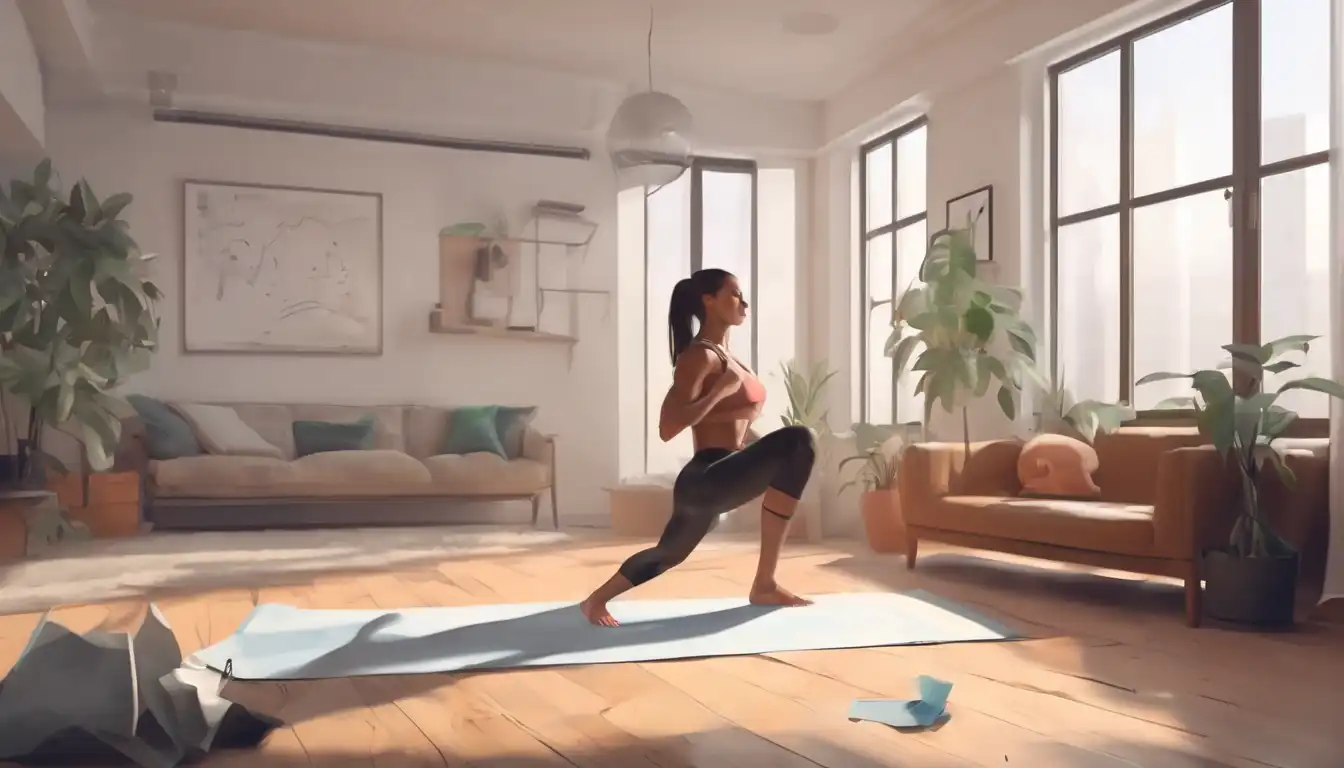Transform Your Body with Simple No-Equipment Home Workouts
In today's fast-paced world, finding time to hit the gym can be challenging. However, you don't need expensive equipment or a gym membership to stay fit. Effective home workouts with no equipment needed are the perfect solution for busy individuals looking to maintain their fitness levels. These workouts leverage your body weight to build strength, improve cardiovascular health, and enhance flexibility.
Why Choose No-Equipment Workouts?
No-equipment workouts offer numerous benefits that make them ideal for home fitness routines. They are incredibly convenient, requiring minimal space and no financial investment in gear. You can perform them anytime, whether you have just 15 minutes during a lunch break or a full hour in the evening. Additionally, bodyweight exercises reduce the risk of injury compared to heavy lifting, as they often involve natural movements that align with your body's mechanics.
Another advantage is the versatility of no-equipment workouts. They can be tailored to any fitness level, from beginners to advanced athletes. By adjusting the intensity, repetitions, or incorporating variations, you can continuously challenge your body and avoid plateaus. For more insights on starting your fitness journey, check out our guide on beginner fitness tips.
Essential Bodyweight Exercises for a Full-Body Workout
To create an effective no-equipment workout, focus on compound movements that engage multiple muscle groups simultaneously. Here are some fundamental exercises to include:
- Push-Ups: Target your chest, shoulders, triceps, and core. Variations like incline or decline push-ups can adjust difficulty.
- Squats: Work your quadriceps, hamstrings, glutes, and calves. For added intensity, try jump squats or pistol squats.
- Planks: Strengthen your entire core, including the abs, obliques, and lower back. Side planks and plank rotations add variety.
- Lunges: Engage your legs and glutes. Forward, reverse, and walking lunges are excellent options.
- Burpees: A full-body exercise that combines strength and cardio, boosting your heart rate while building muscle.
Incorporate these exercises into circuits or sets for a balanced routine. For example, a simple circuit could include 10 push-ups, 15 squats, a 30-second plank, and 10 lunges per leg, repeated 3-4 times with minimal rest. This approach keeps your workout efficient and engaging.
Structuring Your No-Equipment Workout Routine
Consistency is key to seeing results with home workouts. Aim for at least 3-4 sessions per week, alternating between strength-focused days and cardio-intensive days. Here's a sample weekly plan:
- Monday: Upper body focus (e.g., push-ups, tricep dips, plank variations)
- Wednesday: Lower body and core (e.g., squats, lunges, leg raises, bicycle crunches)
- Friday: Full-body circuit (combining exercises from above with high repetitions)
- Sunday: Active recovery (light stretching or yoga)
Each session should begin with a 5-10 minute warm-up, such as jogging in place or dynamic stretches, and end with a cool-down including static stretches. This prevents injury and aids recovery. Remember to stay hydrated and listen to your body—rest when needed to avoid overtraining.
Maximizing Results with Progressive Overload
To continue making progress, apply the principle of progressive overload. Since you're not adding weight, increase difficulty by:
- Adding more repetitions or sets
- Decreasing rest time between exercises
- Incorporating advanced variations (e.g., one-arm push-ups or single-leg squats)
- Increasing time under tension (slowing down movements)
Tracking your workouts in a journal or app can help you monitor improvements and stay motivated. Celebrate small victories, like completing an extra rep or mastering a new exercise variation. For more strategies on staying consistent, explore our article on fitness motivation techniques.
Nutrition and Recovery for Optimal Performance
Exercise alone isn't enough—proper nutrition and recovery are crucial. Fuel your body with a balanced diet rich in protein, complex carbohydrates, and healthy fats to support muscle repair and energy levels. Stay hydrated by drinking water throughout the day, especially around workouts.
Prioritize sleep, as it's when your body repairs itself. Aim for 7-9 hours per night. Incorporate rest days into your routine to prevent burnout and reduce the risk of injury. Active recovery activities, like walking or gentle yoga, can keep you moving without straining your muscles.
Common Mistakes to Avoid
When starting no-equipment workouts, people often make these errors:
- Skipping warm-ups/cool-downs: This increases injury risk.
- Poor form: Focus on technique over speed to maximize effectiveness.
- Neglecting variety: Mix up exercises to work different muscles and prevent boredom.
- Overtraining: Allow time for recovery to avoid fatigue.
If you're unsure about form, consider following along with online videos or consulting a fitness professional. For additional guidance, our resource on common workout mistakes provides detailed tips.
Conclusion: Embrace the Convenience of Home Workouts
No-equipment home workouts are a practical and effective way to stay fit without leaving your house. By incorporating bodyweight exercises, structuring a consistent routine, and focusing on progression, you can achieve significant fitness gains. Remember to pair your efforts with good nutrition and adequate rest for the best results. Start today and discover how easy it is to transform your health from the comfort of your home!
